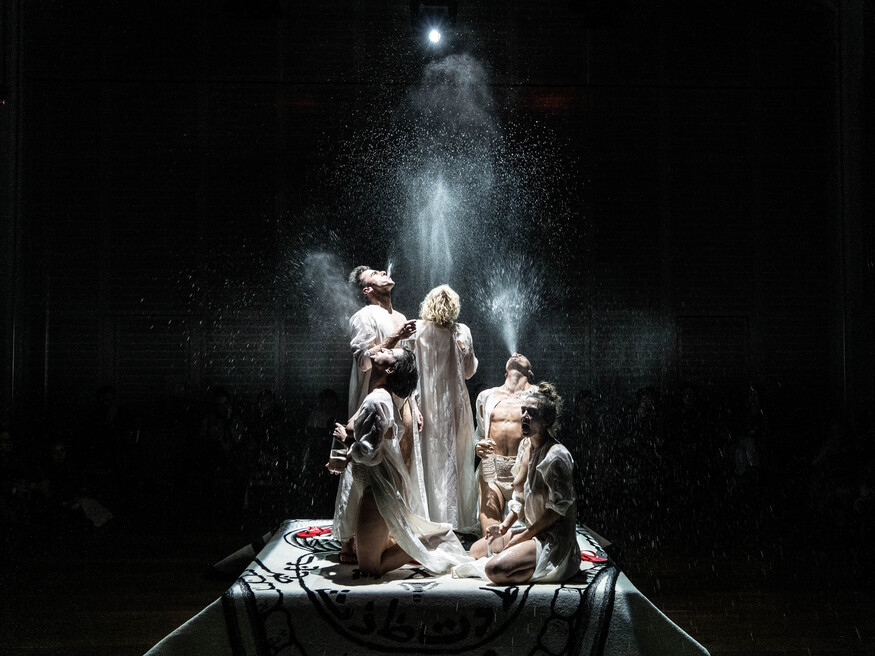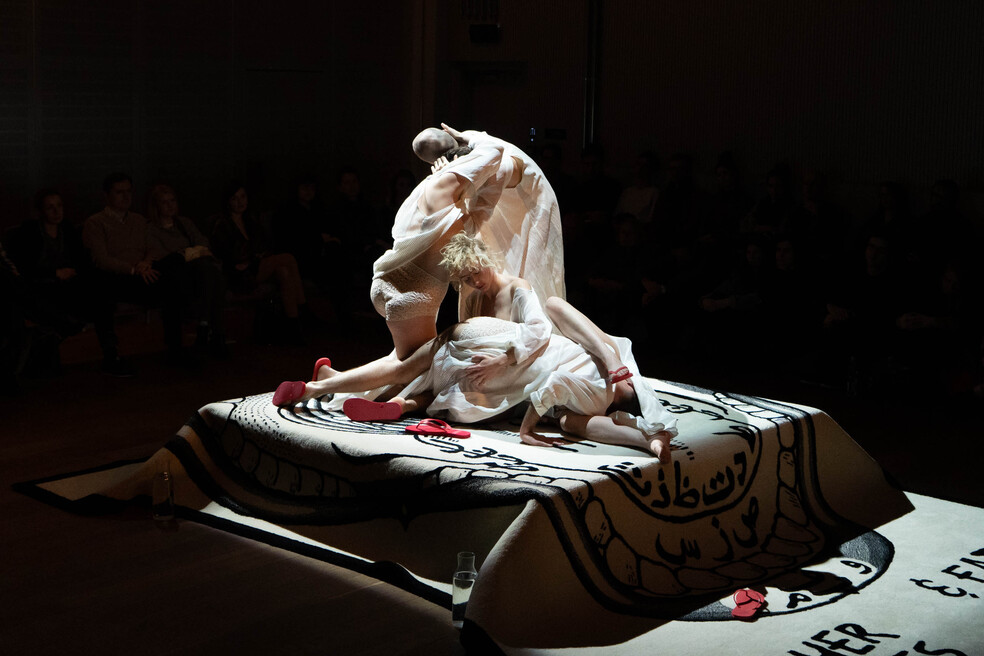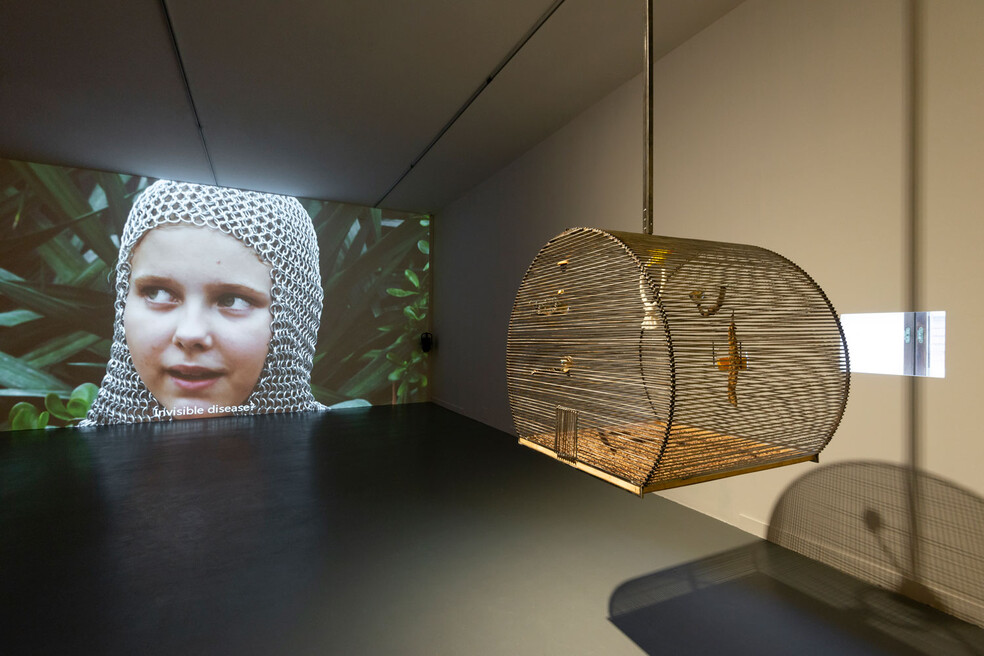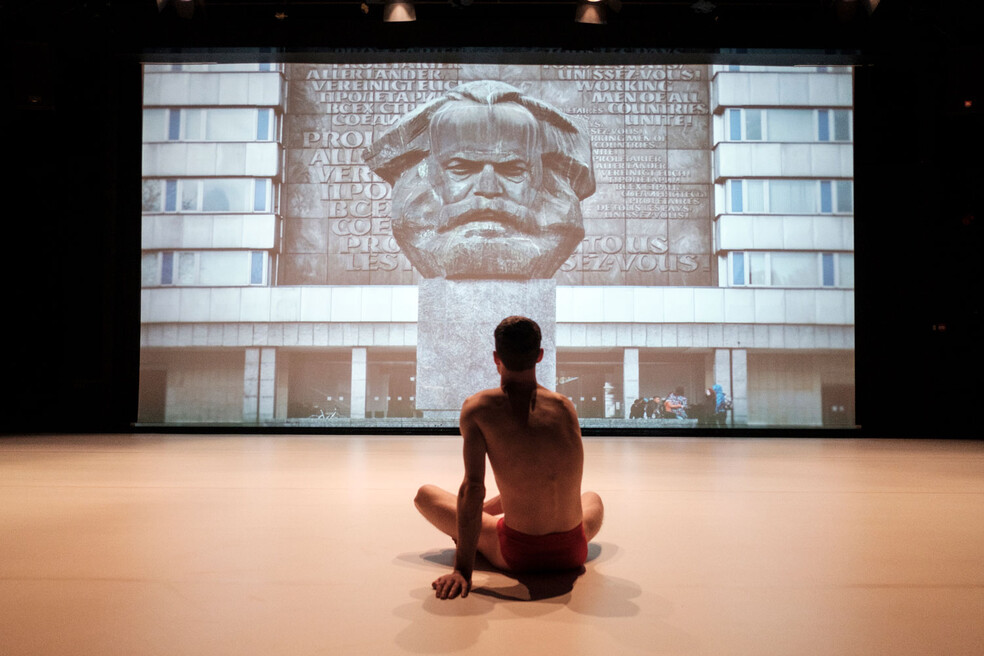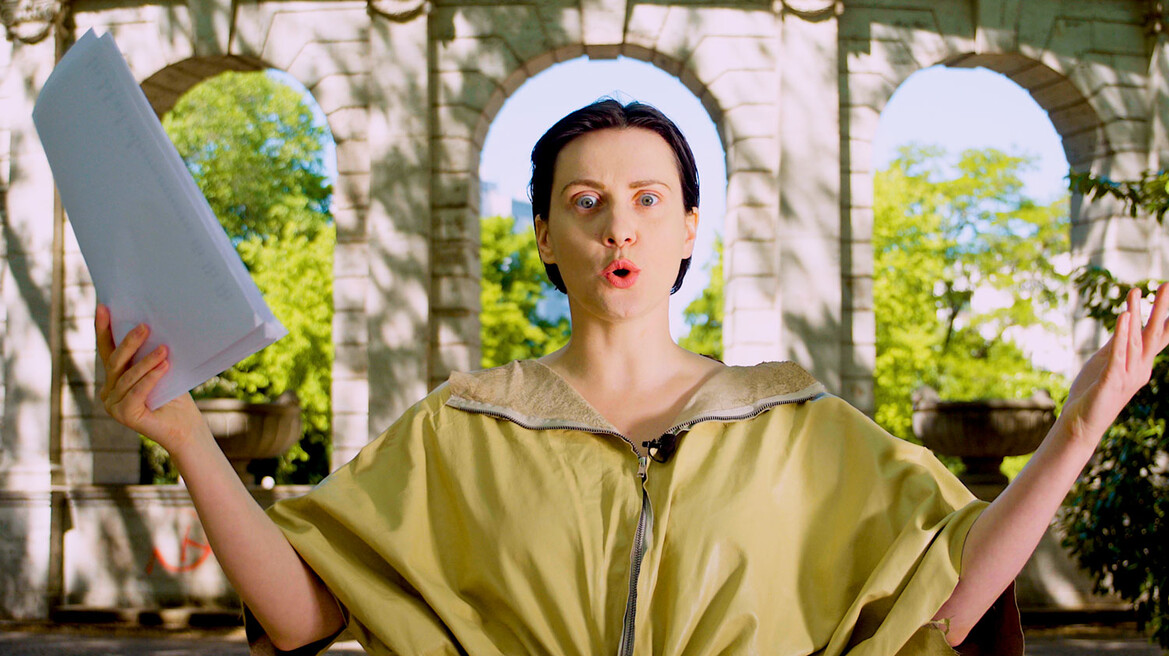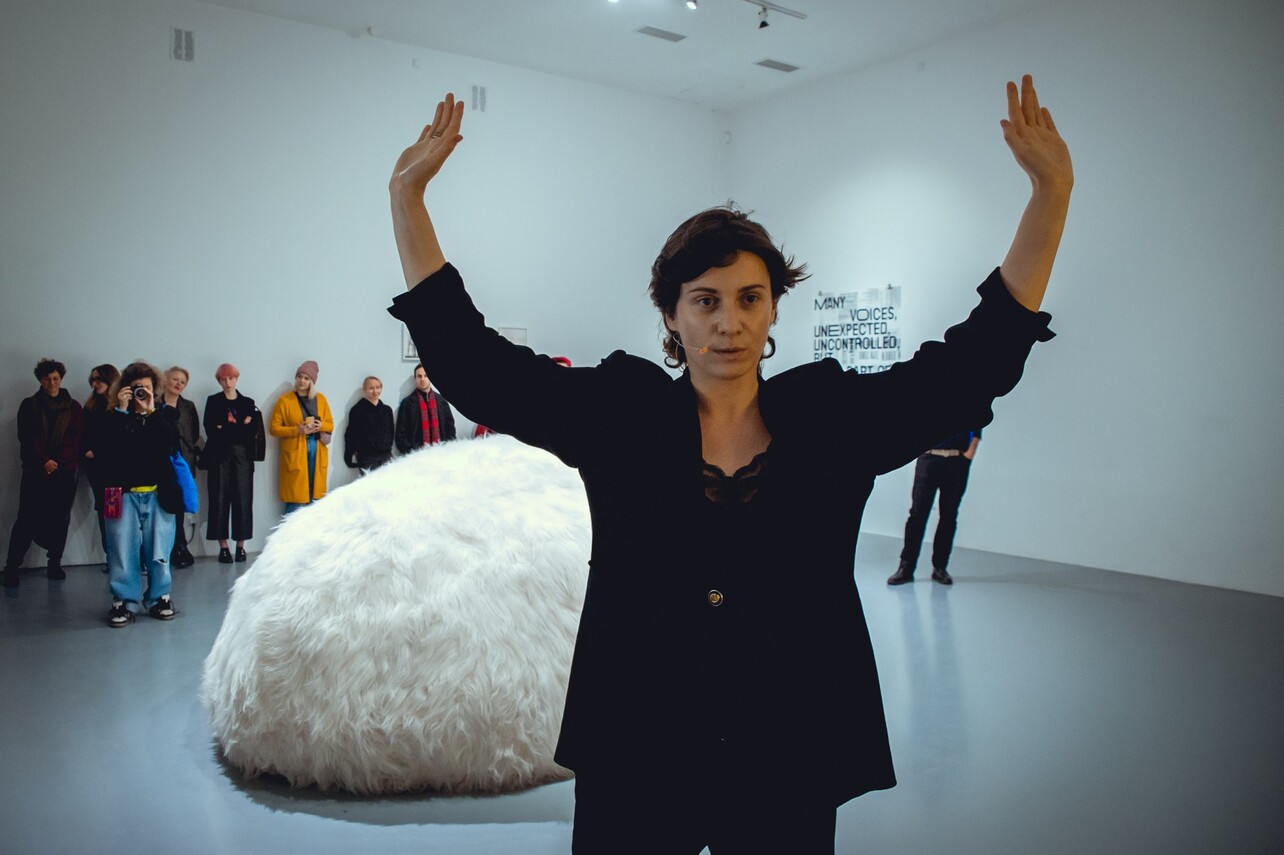Ania Nowak
Bereich: Performance, Text
Key Facts
Nationalität
PolenBereich
Performance, TextWohnort
BerlinEmpfehlende Institution
frei_raum Q21 exhibition spaceZeitraum
März 2021 - März 2021Ania Nowak’s expanded choreographic practice approaches vulnerability and desire as ways towards reimagining what bodies and language can do. She develops formats such as live and video performance, performative exhibition and text. Nowak’s overall inquiry is into the political dimension of body material and its immaterial aspects -affects, feelings and intuition- to think of new, embodied practices of care and companionship. She is especially interested in the latter when taking into account the unstable, transnational character of our lives and work in the Western world today; experiences of sexuality, sickness and grief, as well as, ethics of pleasure in times of climate and political urgency. Nowak’s works have been presented at HAU Hebbel am Ufer and Sophiensaele in Berlin; Nowy Teatr, Ujazdowski Castle Centre for Contemporary Art in Warsaw; BWA Wrocław, CAC Vilnius, HGK FHNW Basel, ICK Amsterdam a.o. In 2021 she is Artist-in-Residence at Ankara Queer Art in Turkey. Nowak lives and works between Berlin and Warsaw.
Recently somebody said on social media that a pandemic is not a residency. We are seeing mass death and despair all around us. We are isolated and fear illness. Given these circumstances, during my stay at Q21 I am looking into spatial, emotional and aesthetic manifestations of endurance and grief. My focus is on the relationship between queer grief and the aesthetic and affective tropes of 17th and early 18th century Baroque style. The research combines a closer inspection of normative spaces of grief, like St Charles Church built after the plague epidemic in Vienna (1713) with a look into contemporary queer mourning rituals linked to the AIDS epidemic and queer modes of community making through celebration and dance. By juxtaposing Baroque’s opulence and focus on transience of all things with queer flamboyance and emotional exuberance as strategies of overcoming trauma and loss, I want to look closer at endurance and sustainability as urgencies organising our current emotional and political climate.
During my month long residency at Q21 MuseumsQuartier (March 2021) I was researching spatial, emotional and aesthetic manifestations of endurance and grief. My focus was on the relationship between queer grief and the aesthetic and affective tropes of 17th and early 18th century Baroque style. The research combined a closer inspection of normative spaces of grief, like St Charles Church built after the plague epidemic in Vienna (1713) with a look into contemporary queer mourning rituals linked to the AIDS epidemic and queer modes of community making through celebration and dance. By juxtaposing Baroque’s opulence and focus on transience of all things with queer flamboyance and emotional exuberance as strategies of overcoming trauma and loss, I wanted to look closer at endurance and sustainability as urgencies organising our current emotional and political climate.
As during my residency Vienna was under a strict lockdown due to Covid-19 pandemic, which meant that social gatherings could not take place, my research was mostly theoretical. It also included one-on-one meetings and exchanges with two fellow Artists-in-Residence, the dancer Arad Inbar and visual artist Artur van Balen, as well as, with Vienna-based sound artist Zofia Holubowska and performing arts theoretician and dramaturg Teresa Fazan.
Among visits to Viennese baroque churches and looking into that period’s architectonical characteristics, I researched queer origins of house music and the mourning potential of electronic music and its dance floors in the 1980s and 1990s. The books “Impossible Dance. Club Culture and Queer World-Making” and “Do You Remember House?
Chicago’s Queer of Color Undergrounds” were my sources. As a queer person and a club dancer myself, I reflected a lot on the new pandemic reality that queers everywhere found themselves in — isolated and cut away from their community spaces, both on a small, intimate scale (bars, private gatherings, support groups), as well as, from queer clubs or communal contexts for advocating social change, like public protests.
The practical part of my residency research was geared towards gathering material and strategies for a performance project which I am currently developing in Berlin (to premiere in February 2022 at Sophiensaele, Berlin) focused on (queer) grief as a social practice in the frame of the affective and aesthetic characteristics of the Baroque and its theatrical genre of Trauerspiel (‘mourning-play’) as explained by Walter Benjamin. I looked at possible relations between social dancing and grief, as well as, militancy (both in AIDS epidemic times and currently) and mourning.
